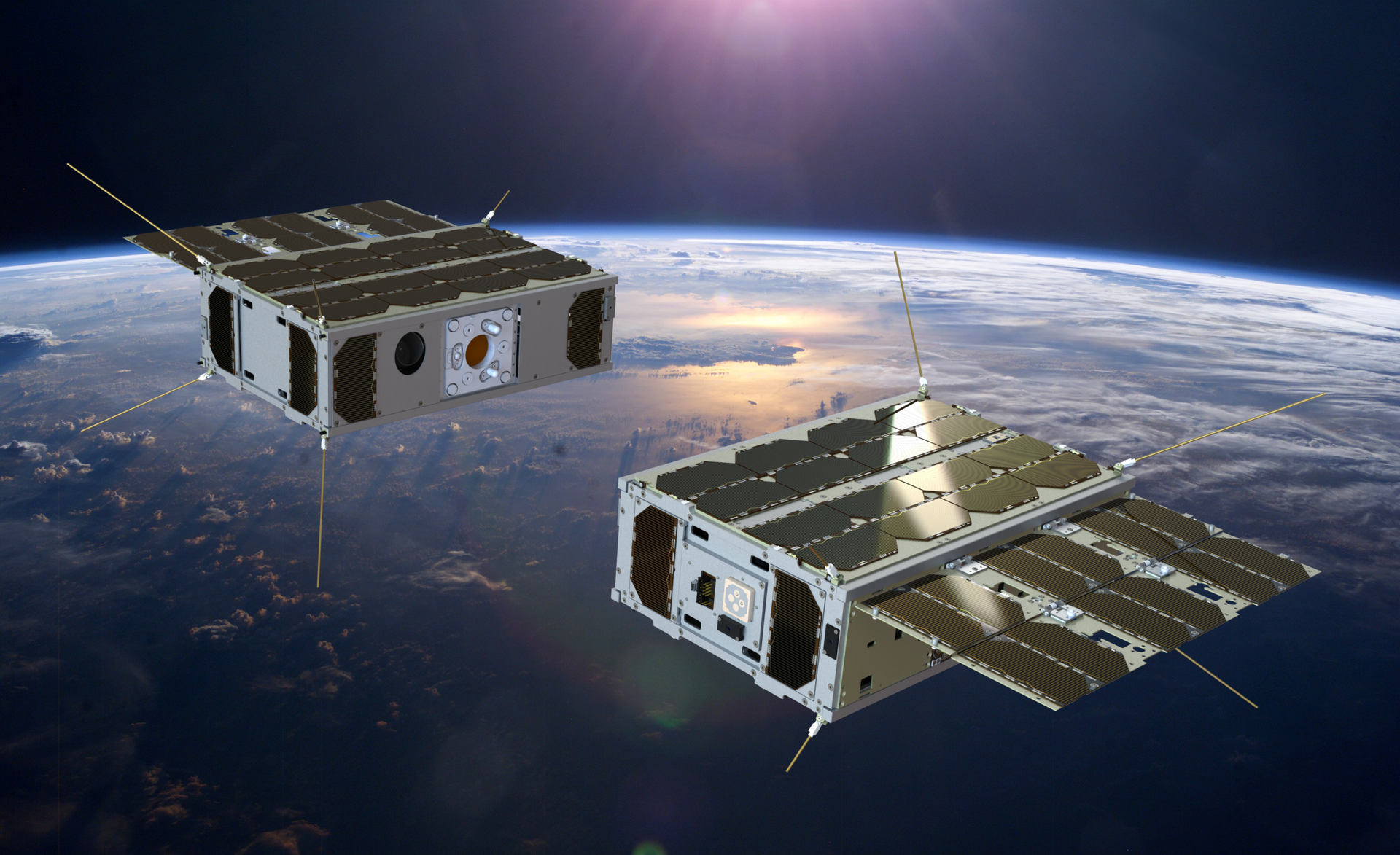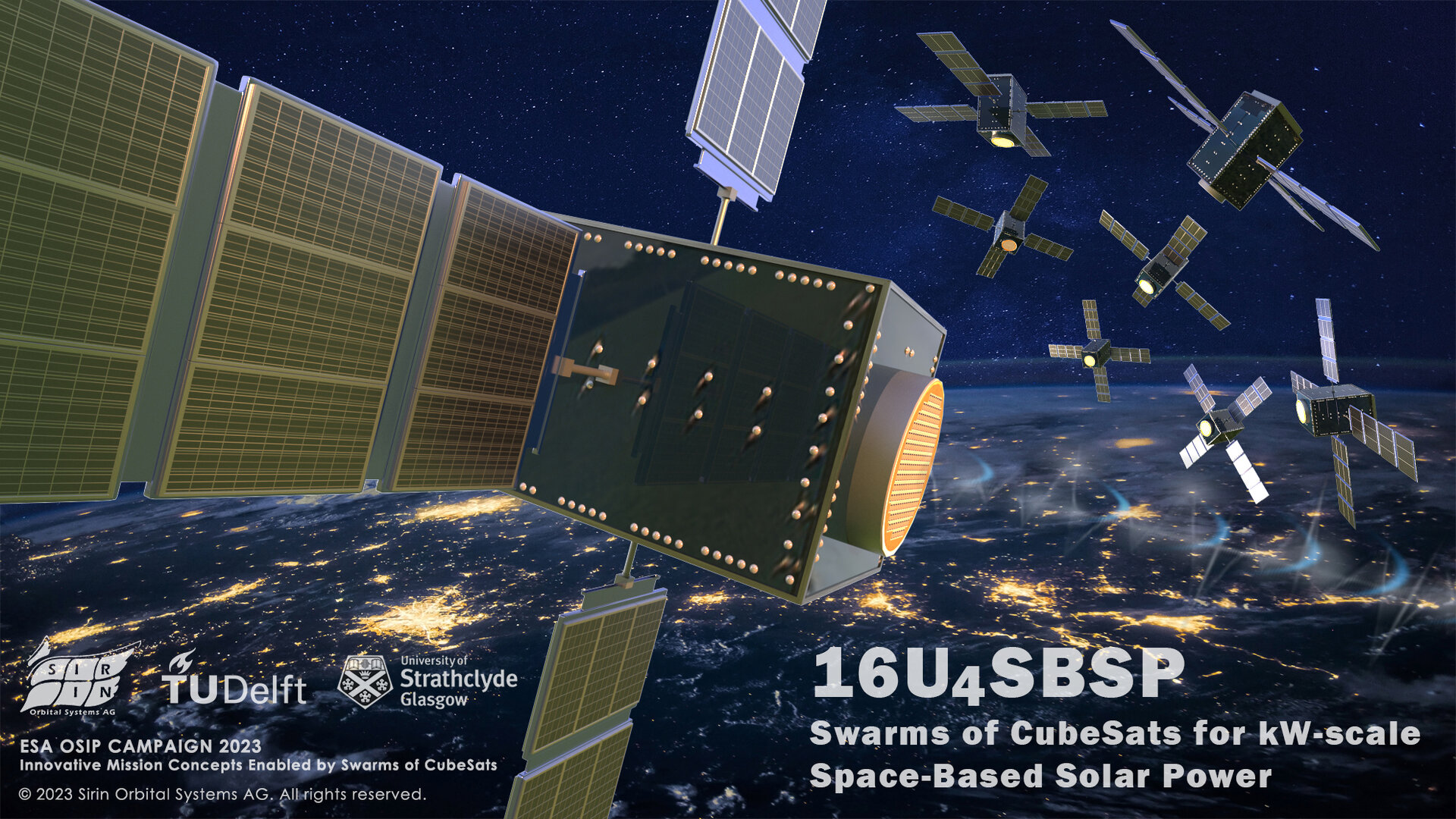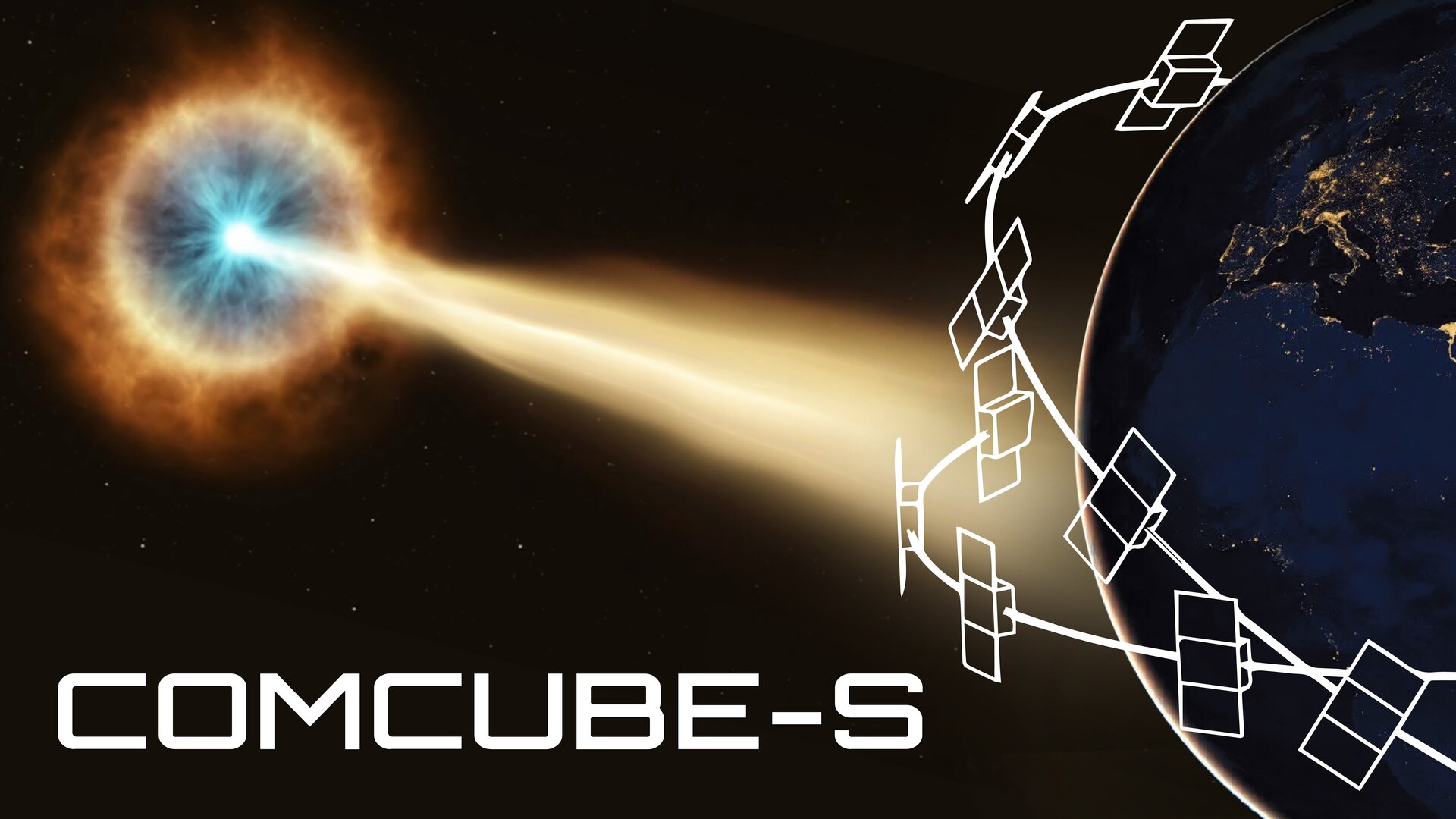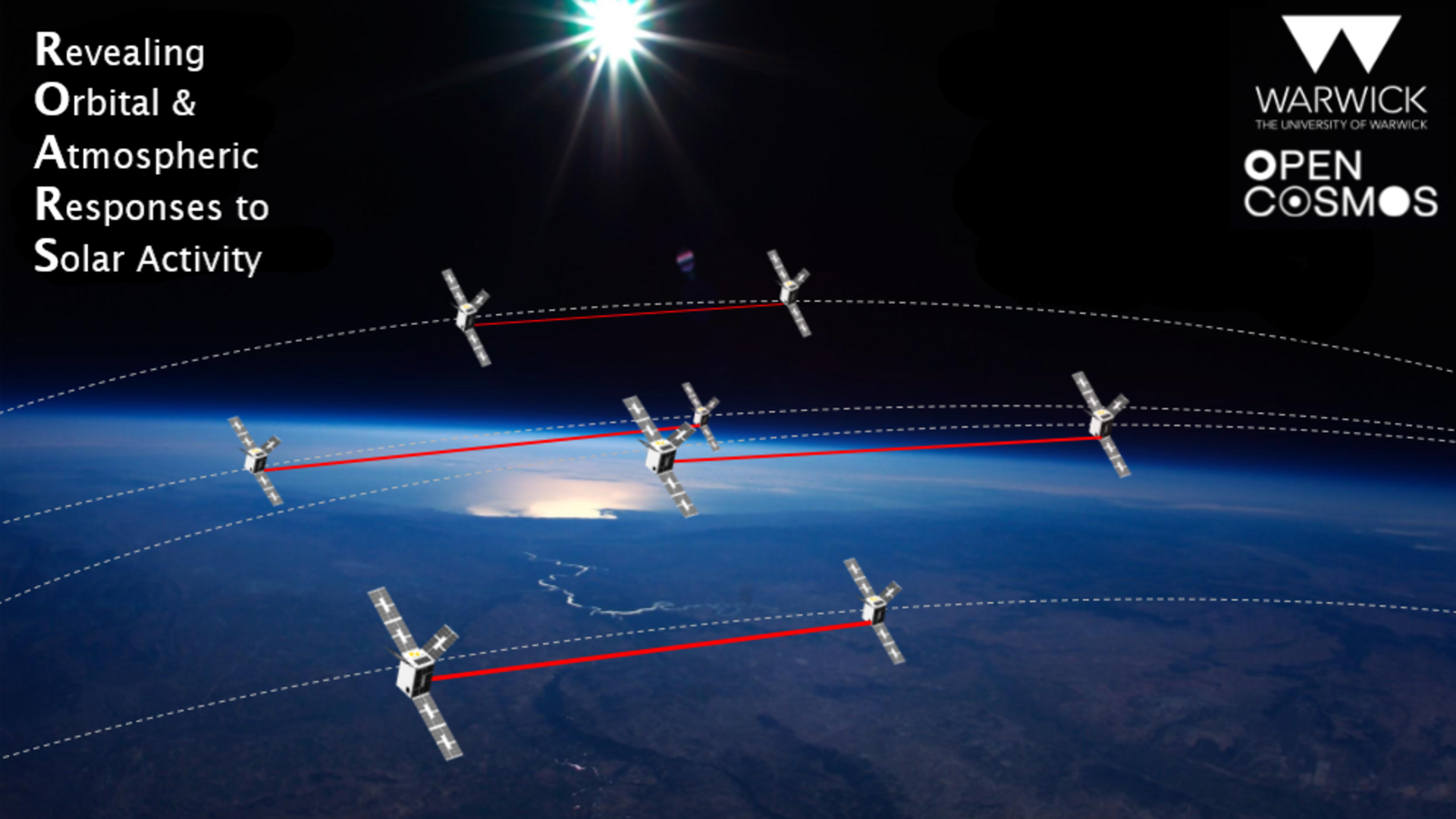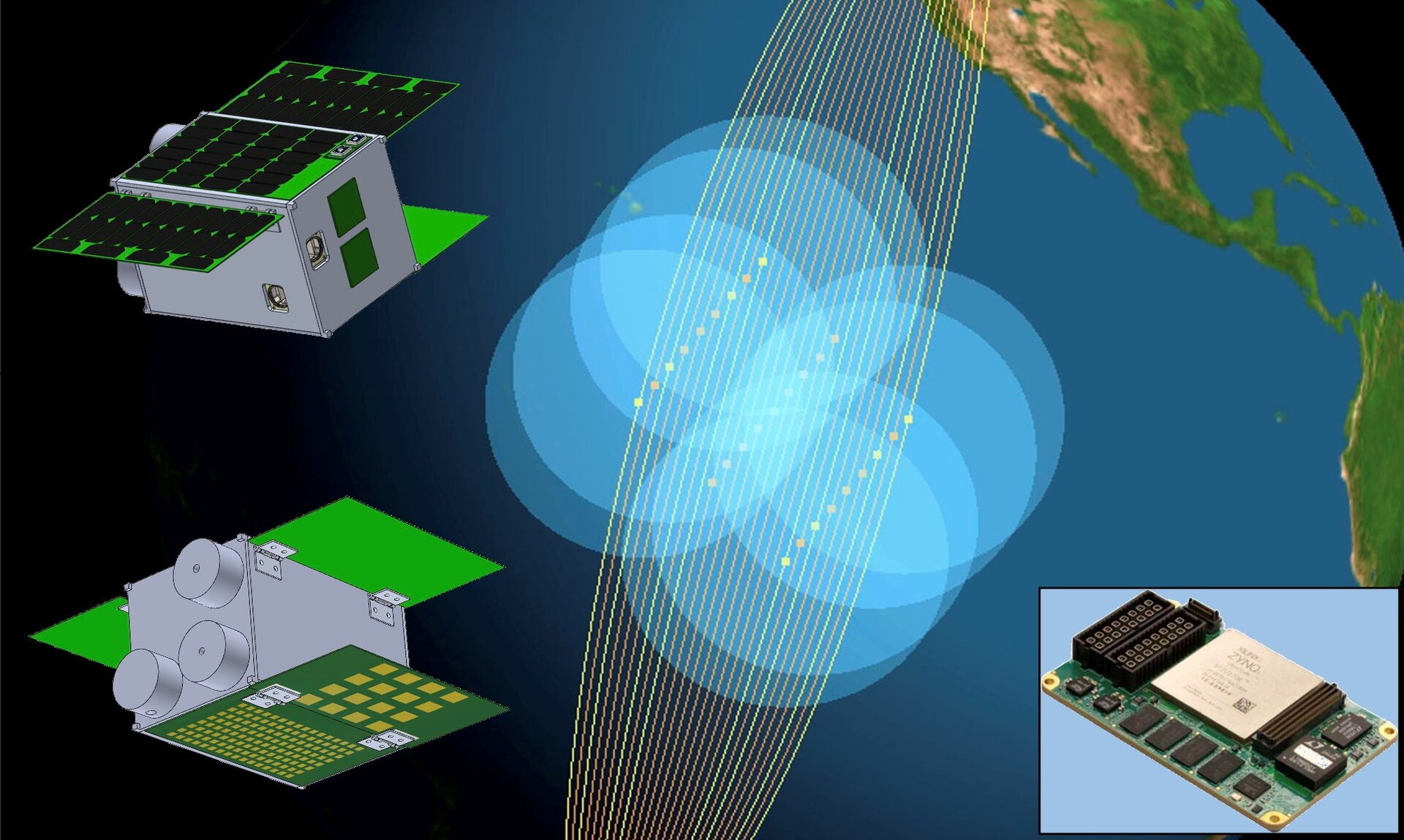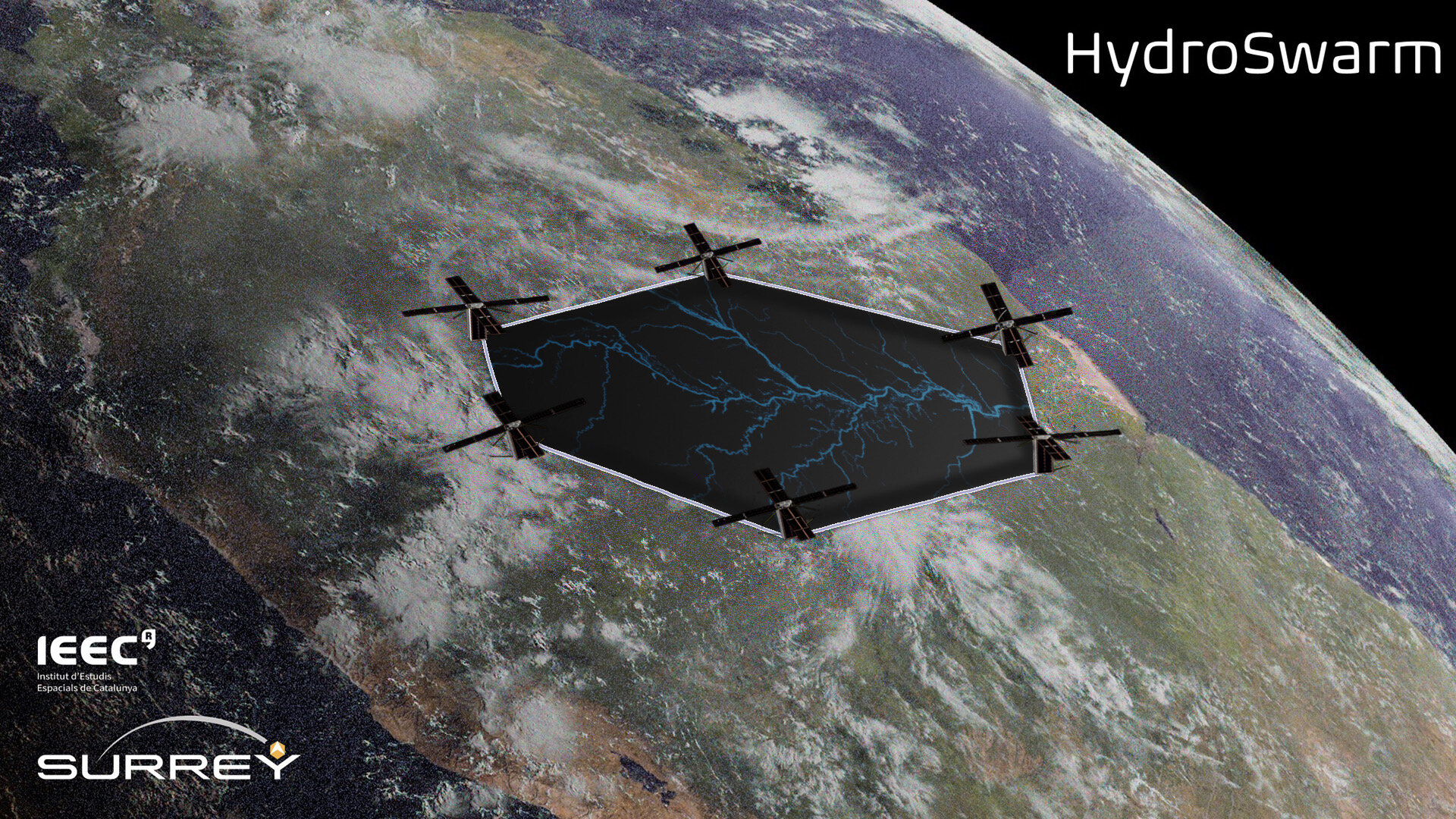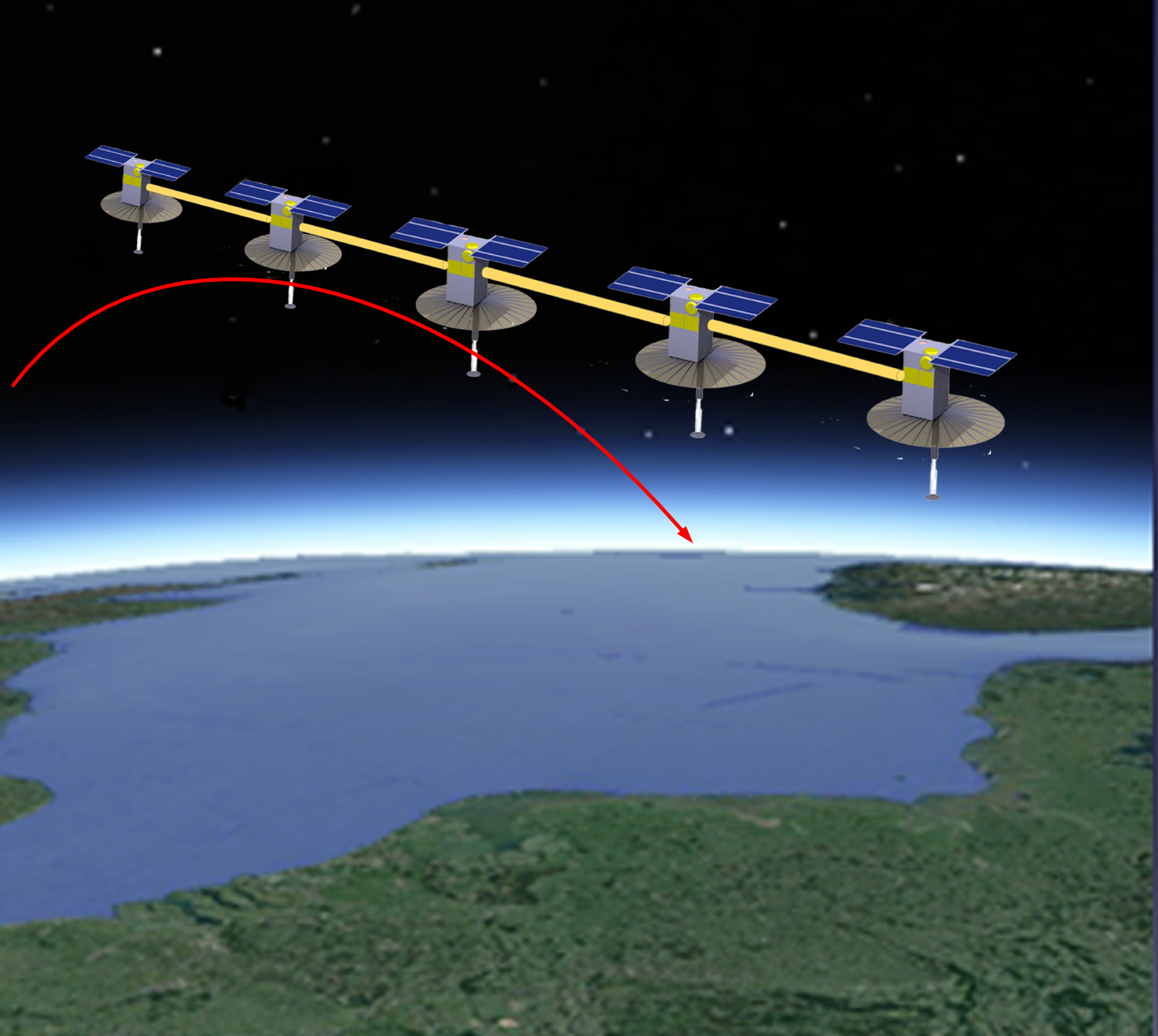Seven ways to use a CubeSat swarm
By flying together in a swarm, tiny spacecraft called CubeSats can achieve things greater than what any lone spacecraft can. ESA's call for ideas on breakthrough mission concepts for CubeSat swarms was widely answered, with seven ideas now selected for further study.
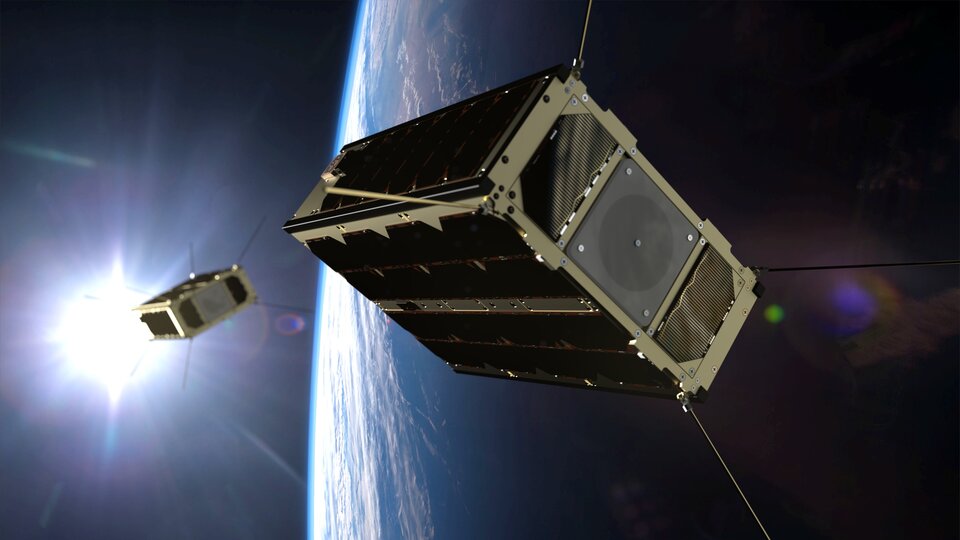
A CubeSat is a miniature satellite made up of one or more standard-sized 'units'. Each unit measures just 10 cm×10 cm×10 cm and weighs less than 2 kg. They are quick and cheap to produce and can carry all sorts of instruments on board. "CubeSats have evolved from being a tool for hands-on education at universities, to a platform for testing and demonstrating new technologies, to in the last five years being employed in scientific missions and commercial operations,” notes Roger Walker, head of ESA's CubeSat Systems Unit.
So far, CubeSats have mostly operated alone, or in constellations. However, the latest technology developments in inter-satellite communication, fine movement control and navigation will allow up to tens of CubeSats to fly together in what’s called a swarm. Crucially, a swarm operates as a single unit, with spacecraft autonomously positioning themselves to fly in a close-knit formation or attaching themselves together to form a larger spacecraft. (A swarm is different from a satellite constellation, in which spacecraft fly in complementary orbits distributed globally, but otherwise still act alone.)
"By flying in swarms, CubeSats can really bring something new to the field," says CubeSat system engineer Camille Pirat. "Teamwork allows a swarm to do more than what any collection of individual spacecraft can. Europe has a lot to offer in this new approach to spaceflight!"
Swarms for observations, internet, solar power or space safety
Earlier this year, ESA asked for your innovative ideas for new mission concepts enabled by CubeSat swarms. The open call for ideas was run by the Preparation element of ESA's Basic Activities through the Open Space Innovation Platform (OSIP). The call was answered no less than 61 times. Seven ideas were selected based on an evaluation by a panel of ESA experts, who scored the ideas on their novelty, technological feasibility, and the relevant experience of the submission team.
"We anticipated proposals for using CubeSat swarms for Earth observation, telecommunications, astronomy and solar physics. However, we were excited to also receive a significant number of ideas for space-based solar power, space situational awareness, atmosphere science and navigation," says Camille.
He adds: "Each idea was evaluated separately and according to the same criteria. To our pleasant surprise the seven ideas that made it through to the final round covered the full breadth of applications."
Two of the selected ideas use CubeSat swarms to beam down internet or solar energy. Four ideas focus on performing higher-resolution or new types of measurements, either looking down to Earth or up to outer space. The seventh studies how Earth's upper atmosphere and the satellites flying through it are affected by space weather, so that future satellites are better prepared. Read more about the selected ideas here.
Exciting blue-sky ambition
"These blue-sky mission proposals are exciting because they force us to develop new technologies and push the state of the art. One of our tasks at ESA is to identify which technologies need developing and prioritise those so that they will be at a higher technology readiness level once the mission concept studies are complete," says Camille.
All swarms require a robust propulsion system providing fine movement control, precise navigation and spatial awareness, and autonomous fault detection, isolation and recovery. However, each individual mission proposal requires specific types of innovation to meet its unique needs.
For example, the selected PULSARS idea hopes to use a CubeSat swarm to provide highly secure 5G internet for a confined region on Earth. It is the only selected idea which hopes to fly a CubeSat swarm in a distant geostationary orbit (GEO), a high-radiation environment which a standard CubeSat would struggle to reach and survive in. Additionally, there are strict rules in place to keep this popular orbit clean, so the satellites must be safely removed from the orbit at the end of their lifespan.

Another example is AltiCube+, which envisions CubeSats physically linking together to overcome some of the challenges of maintaining formation in flight for extended periods of time. This is what's known as an aggregated swarm and comes with a whole range of challenges associated with autonomously aligning and docking while flying through space. Camille: "In-space assembly of spacecraft is part of ESA's Agenda 2025; Aggregated swarms will be important for expanding our capability to build large structures in space."
The selected ideas are each given six months and funding from ESA up to €100 000 to perform a mission/system concept study. Based on the outcomes of these studies, the best mission concept will be awarded a session at ESA's Concurrent Design Facility together with ESA experts, which may lead to an In-Orbit Demonstration (IOD) mission. ESA hopes to launch the first swarm IOD missions by 2026 and have the first operational mission launched by 2029.















 Germany
Germany
 Austria
Austria
 Belgium
Belgium
 Denmark
Denmark
 Spain
Spain
 Estonia
Estonia
 Finland
Finland
 France
France
 Greece
Greece
 Hungary
Hungary
 Ireland
Ireland
 Italy
Italy
 Luxembourg
Luxembourg
 Norway
Norway
 The Netherlands
The Netherlands
 Poland
Poland
 Portugal
Portugal
 Czechia
Czechia
 Romania
Romania
 United Kingdom
United Kingdom
 Slovenia
Slovenia
 Sweden
Sweden
 Switzerland
Switzerland

























